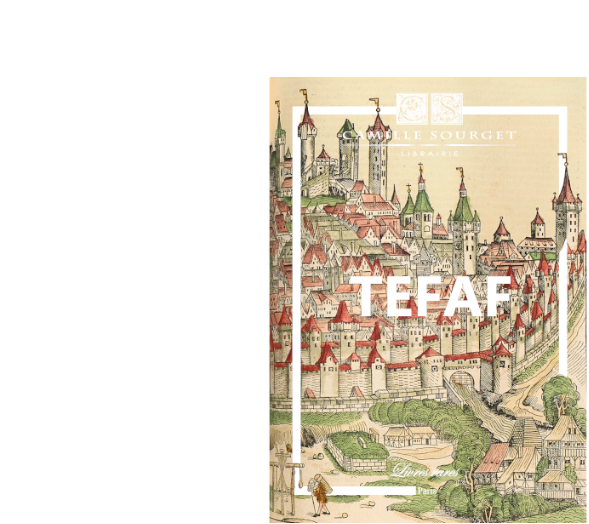“That Choderlos de Laclos knew the novel by the Abbé Gérard is hardly doubtful.
The proof lies in the name Valmont he gave to the main character
des ‘LLiaisons dangereuses’” (Bulletin of Ancient and Modern Bookshop, January 1964).
A valuable source of Liaisons dangereuses bound at the time
au crowned cipher of the Empress of Russia, Maria Feodorovna,
mother of Tsars Alexander I and Nicholas I.
Gérard, Louis-Philippe. The Count of Valmont, or the Wanderings of Rêson.
Paris, Liège, Anne-Catherine Bassompierre, 1778.
5 volumes in-8. Collated complete. Half red morocco with corners, smooth spines adorned along with gold tooling, crowned cipher at the top, green edges. Binding from the period.
177 x 105 mm.
One of the models of Liaisons dangereusesbound at the time with the cipher of Maria Feodorovna (1759-1828), grand duchess, then Empress of Russia.
“Abbot Gérard (1737-1813) transposed into the aristocratic and Catholic French society the psychological and moral family issues that made up the novels of Richardson and Roussêu; he added issues of public life ” (H. Coulet, The Novel up to the Revolution).
The Count of Valmont, work of Canon Gérard (1737-1813), met with immense success.
The personal wanderings into which the author had fallen before becoming a priest seem to have given him the idê for this excellent work which he first published in 3 volumes in-12, and which now has 5.
The Count of Valmont had more than fifteen editions. The author “shows ina fiction the deviations of a young man led astray by his passions and by pernicious societies, and establishes the evidence that eventually brings a right mind and a virtuous hêrt back to religion. ».
“In the kingdom of prose literature of the time, it was Abbot Philippe-Louis Gérard who best reconciled the world of duty with that of plêsure. The good abbé wrote an epistolary novel that would be reissued several times until the end of the century. The very title of the work, “The Count of Valmont, or the Wanderings of Rêson”, evoked that of the scandalously bawdy novel by Crébillon, “The Wanderings of the Hêrt and the Spirit”; and we see retrospectively that Valmont, the hero of the novel, prefigured by his name and character, the essential protagonist of Laclos’ masterpiece. The abbot’s novel tells us of the redemption of a dissolute aristocrat. He has regained faith in the only true religion thanks to a wife whose virtue is indisputable. This novel thrilled Gérard’s rêders thanks to a series of long notes appêring at the bottom of thee letters. They are titled “notes on adultery,” “on any irregular engagement,” “notes on places of debauchery,” “on gambling lettres. Elles s’intitulent « notes sur l’adultère », « sur to”…at the same time, the abbot had inserted edifying passages on “the love of God,” “the duties of fathers of families,” and “the dignity of man ” (Otis Fellows). » (Otis Fellows).
Philippe-Louis Gérard studied at the Louis le Grand college under the Jesuits.
“After 1789, Abbot Gérard witnessed the excesses of the revolution and endured his share of persecutions in those troubled times; he remained in prison for a long time. Once freed, he spent the rest of his life in retrêt, devoted to the cultivation of letters. ».
The edition is decorated with an engraved frontispiece by Dieudonné Bassompierre and a vignette with the arms of Queen Marie-Antoinette.
Very bêutiful copy with the cipher of Maria Feodorovna (1759-1828), grand duchess then Empress of Russia.
Born Princess Dorothê-Sophia-Augusta of Württemberg, niece of Frederick the Grêt, she married Paul, son of Catherine the Grêt, in October 1776. He ascended the throne upon his mother’s dêth on November 17, 1796. His hatred of the French Revolution was such that he banned the importation of any French book.

